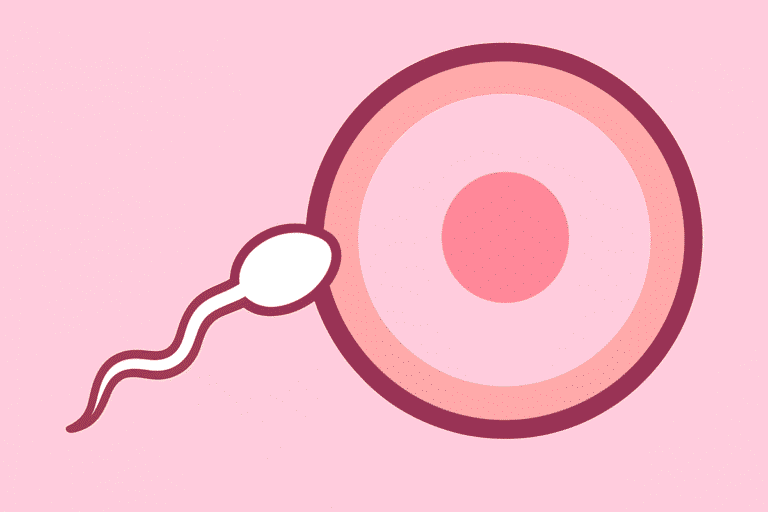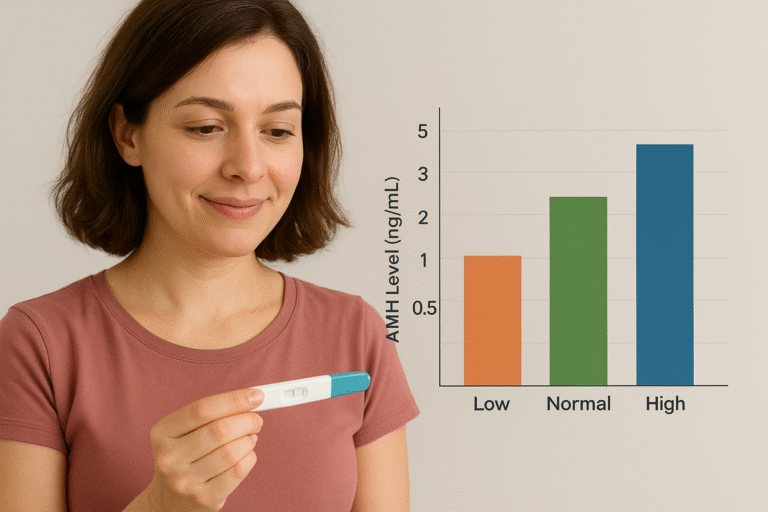Understanding the different stages of menopause can help you make sense of what may be a confusing time. Menopause is not just one event; it happens over the years and is a natural biological process that marks the end of a woman’s reproductive years. This detailed guide provides in-depth information about the stages of menopause, including the five stages of menopause, the nuances of the early stages, and a clear graphic illustration of the menopause stages.
With this information, you can identify changes, manage symptoms effectively, and navigate this critical time in your life with confidence and clarity. Knowing what the stages of menopause are gives you the power to take care of your health and well-being at every stage.
What Are the Stages of Menopause?
Everyone experiences menopause, yet each person’s experience is unique. People commonly think of menopause as the time when periods stop, but it’s a multi-year process with significant changes in hormones. Understanding the stages of menopause is crucial for recognizing the symptoms women may experience. Most medical organizations agree that there are three main stages of menopause: Perimenopause (the time leading up to it), menopause (the time itself), and Postmenopause (the years after).
However, if we break down Perimenopause and Postmenopause into smaller parts, we can identify the five stages of menopause. This comprehensive overview of Early Perimenopause, Late Perimenopause (Menopausal Transition), Menopause, Early Postmenopause, and Late Postmenopause provides a clearer understanding of how to manage the shifting hormones and what symptoms to expect at each stage. The first step to being proactive is to understand the stages of menopause.
Phase 1: Perimenopause The Transition Begins
Perimenopause marks the end of a woman’s reproductive years. It is marked by significant changes in hormones that occur before the final menstruation. This phase, which includes the first signs of menopause, usually starts slowly in a woman’s mid-40s (the average age is 47), although for some women, it can start as early as their mid-30s. Perimenopause doesn’t endure a short time; it can last anywhere from two to ten years, with the average being four to eight years.
The primary cause is that the ovaries produce less estrogen and progesterone over time, which makes the menstrual and ovulation cycles more unpredictable. This hormonal rollercoaster is what causes all the various symptoms that appear at this time. To understand when changes begin, it’s essential to know that perimenopause is the first and usually the longest period of menopause.
Early Perimenopause
Early perimenopause often begins with subtle changes that are easy to overlook. This first substage is the start of the early stages of menopause. Changes in your menstrual cycle are the most prevalent and telling indicator. Your cycles are usually regular, although the length of your cycle starts to change. You may notice that your cycle is becoming shorter or that it changes by seven days or more from one period to the next. For example, one month your period might come a week early, and the following month it might come closer to “on time.”
Along with these changes in your cycle, you may start to notice early signs of menopause, which are usually modest and come and go. Some of these are mild hot flashes (a sudden feeling of warmth, usually in the upper body), sleep problems (having trouble falling asleep or staying asleep for no apparent reason), more sensitive breasts like before your period, small changes in mood or irritability, and a frustrating tendency to gain weight, especially around the stomach, even though your diet and exercise haven’t changed much. This early stage of menopause usually lasts between 2 and 4 years and is the body’s first response to lower hormone levels.
Late Perimenopause
Late perimenopause, which is also called the Menopausal Transition, is when hormone changes become much more noticeable and disruptive. This period represents a significant shift from the subtlety of Early Perimenopause. The main sign of Late Perimenopause is that periods become even more irregular. The time between cycles becomes significantly longer, often exceeding 60 days. You could go months without having a period at all. When periods do happen, they are heavy (menorrhagia) or very light.
Along with these significant changes in the cycle, symptoms worsen and occur more frequently. Hot flashes and night sweats can worsen and occur more regularly, leading to excessive sweating and multiple nighttime awakenings. Vaginal dryness, which is a symptom of Genitourinary Syndrome of Menopause (GSM), may become evident and have sex uncomfortable at times. Your mood fluctuations, anxiety, impatience, or symptoms of low mood may become more intense. A lot of women also get “brain fog,” which means they have trouble concentrating, forget things, or feel intellectually foggy. Sleep issues can worsen beyond simply waking up in the middle of the night. This strong stage of menopause, which is caused by estrogen levels that go up and down a lot and usually go down, usually lasts 1 to 3 years and ends with the last menstruation.
Also Read: Learn About Sexual Tension
Phase 2: Menopause The Defining Moment
The formal definition of menopause is the day that comes after 12 months of not having a menstrual period. It’s not a phase; it’s a milestone in the bigger stages of menopause. Most women go through this occurrence between the ages of 51 and 52, but genetics, lifestyle, and some medical problems or treatments (such as surgery or chemotherapy) can change when it happens. At this stage, the ovaries have ceased mainly releasing eggs and are producing only minimal levels of estrogen and progesterone.
The event is distinguished by the lack of periods, although the symptoms often get worse around this time since estrogen levels drop sharply and reach their lowest point. Up to 75–80% of women have vasomotor symptoms (VMS), such as hot flashes and night sweats. These symptoms are usually at their worst and most common in the year preceding and following the last menstrual period. Genitourinary symptoms grow more common and last longer.
These include severe vaginal dryness, vaginal atrophy (thinning of vaginal tissues), discomfort during sex (dyspareunia), and urine symptoms include increased urgency, frequency, or recurrent urinary tract infections. Mood swings, anxiety, and memory problems are some of the psychological consequences that may last or get worse. This point marks the end of the reproductive years and anchors the whole sequence of menopausal stages.
Phase 3: Post menopause Life After Menopause
Postmenopause starts the day after you go 12 months without a period (menopause) and lasts for the rest of a woman’s life. This is the stage of menopause that lasts the longest. Most women find that their most severe symptoms, like severe hot flashes and night sweats, get less frequent and less severe within 2 to 5 years after their last period.
However, it’s important to remember that some symptoms may last longer or new long-term health issues may arise because of permanently low estrogen levels. Genitourinary Syndrome of Menopause (GSM), which includes vaginal dryness, atrophy, and urinary symptoms, often doesn’t go away or even gets worse if not treated. The long-term health effects of not having enough estrogen become more and more critical.
Osteoporosis (bone loss) speeds up a lot in the first few years after menopause, which makes fractures much more likely. Heart disease is the leading cause of death for women after menopause because estrogen’s protective effects on blood arteries and cholesterol levels wear off. Changes in metabolism can make it harder to control your weight, primarily when visceral fat accumulates around your stomach and insulin resistance increases. Some women may still get milder, sporadic hot flashes for many years after their skin loses some of its suppleness. Recognizing that postmenopause is a distinct stage of menopause is crucial for prioritizing health strategies for the remainder of your life.
Early Post menopause
Early Post menopause is the time between 2 and 3 years after menopause. This is similar to the first few days after the body has adjusted to the new, very low estrogen level. At this point, a lot of women notice that their vasomotor symptoms, such as hot flashes and night sweats, have become less intense and happen less often. But it’s also a time when symptoms connected to GSM, like changes in the vagina and urinary system, usually get worse and last longer since the lack of estrogen keeps affecting these tissues.
This is also the time when bone mineral density drops the fastest, which shows how important it is to take care of your bones. Hormone levels are low, but they may still change a little bit before they settle down even further. Recognizing early Post menopause as a separate stage of menopause makes it clear that symptoms need to be managed and long-term health precautions need to be put in place.
Late Post menopause
Late post menopause usually starts between 3 and 6 years following the last period and lasts for the rest of your life. At this point, hormone levels have generally settled down to their low postmenopausal baseline. For most women, severe vasomotor symptoms like hot flashes and night sweats have either gone away or are very rare. However, GSM (vaginal dryness, atrophy, and urinary symptoms) is still a frequent problem that many people have to deal with for the rest of their lives. In the final stage of menopause, the focus shifts to long-term health maintenance and prevention.
The risks that were found earlier, especially osteoporosis/osteopenia and heart disease, are still high and need to be carefully managed through lifestyle changes (like diet, exercise, and not smoking) and sometimes medical treatments (like medications to strengthen bones, lower cholesterol, and lower blood pressure). Maintaining your metabolic health and staying at a healthy weight remain crucial. The acute transition is over, but preventive healthcare that focuses on ageing well remains very important throughout late postmenopause.
A Visual Guide: Stages of Menopause Chart
This chart provides a concise overview of the key characteristics defining each of the stages of menopause:
| Stage | Typical Age Range | Duration | Key Hormonal Changes |
|---|---|---|---|
| Early Perimenopause | Mid 30s – Late 40s | 2-4 years | Estrogen/progesterone begin fluctuating |
| Late Perimenopause (Menopausal Transition) | Late 40s – Early 50s | 1-3 years | Estrogen/progesterone fluctuate wildly & decline |
| Menopause | Avg. 51-52 (12 months without period) | Periods Single point | Estrogen/progesterone very low & stable |
| Early Postmenopause | 1-3 years after menopause | 2-3 years | Estrogen/progesterone low & stabilizing |
| Early Postmenopause | 3-6+ years after menopause | Lifelong | Estrogen/progesterone consistently very low |
Symptoms Across the Stages of Menopause
The symptoms that happen during menopause are closely related to the changing levels of hormones, especially the drops and changes in estrogen and progesterone. Every woman’s path through menopause is unique, but understanding how symptoms typically evolve can be helpful.
Physical Symptoms: Changing at Each Stage
- Perimenopause (early and late): periods that are not regular (different cycle lengths, missing periods, and alterations in flow). Hot flashes and nocturnal sweats typically start and worsen. Common symptoms include sore breasts, headaches, heart palpitations, joint and muscle pain, weight gain (particularly in the stomach), hair loss or changes in texture, and changes in body odor. People often feel tired, which is typically due to insufficient sleep.
- Menopause: Hot flashes and night sweats often worsen and occur more frequently during this stage of life. GSM symptoms (such vaginal dryness, pain during sex, needing to pee a lot, and UTIs) get worse. The skin may feel thinner and drier. Joint discomfort can be bad. Sleep problems often persist.
- Postmenopause (Early & Late): After menopause (early and late), vasomotor symptoms like hot flashes and night sweats usually improve over a few years, but some people may still have them. Without therapy, GSM symptoms such vaginal dryness, atrophy, and urinary problems tend to get worse over time. The primary focus on physical health encompasses long-term hazards, including osteoporosis (which can cause back discomfort, loss of height, and fractures), cardiovascular disease, and metabolic changes (which can make weight management more challenging and increase the risk of diabetes).
Emotional and Cognitive Symptoms: The Mind-Body Connection
- Perimenopause (Especially Late): This is generally the hardest time for mental and emotional health since hormone levels change so often. A lot of people have mood swings, impatience, anxiety, sorrow or despair, panic attacks, and “brain fog,” which is when they have trouble concentrating, forgetting things, or feeling mentally cloudy. Poor sleep due to night sweats can exacerbate these issues.
- Menopause: Mood-related problems and brain fog may still happen, but they may start to get better as the hormone levels drop off.
- Postmenopause (Early & Late): After menopause, Many women’s moods and cognitive abilities get better when their hormones are balanced, but some people may still have problems. Chronic symptoms, such as GSM or sleep problems, may have an indirect effect on mood and quality of life. There may also be depression or anxiety that isn’t related to menopause.
Conclusion
The best way to navigate this life-changing time is to understand the various stages of menopause, from the subtle changes of early perimenopause to the long-term health focus of late postmenopause. Understanding the phases of menopause, recognizing the indicators of the early stages of menopause, and utilizing tools like a menopause stages chart will help you better know what you’re going through. Keep in mind that the five stages of menopause give you a precise plan: There are five stages of menopause: early perimenopause, late perimenopause, menopause, early post menopause, and late post menopause.
The journey through menopause can be challenging since hormones change and drop, but there are ways to deal with symptoms at every stage. You have power. Please keep track of your symptoms, discuss them openly and honestly with your doctor, explore all your treatment options (both hormonal and non-hormonal), and make lifestyle choices that promote your mental and physical well-being. Menopause is not the end; it is a significant change. You may get through this chapter with more confidence, strength, and a focus on prospering in the years to come if you learn about menopause and take care of yourself at every step.




[…] Also Read: Learn About Menopause Stages […]
[…] fluctuations in hormones, particularly during specific menstrual cycle phases, perimenopause, or menopause, can induce or exacerbate PGAD. Nerve function and tissue integrity are believed to be impacted by […]
[…] Also read: Stages of Menopause Explained: Your Complete Guide […]